12 Fascinating Hoover Dam Facts For Kids
Black Canyon, Arizona, near the Nevada border, is home to the Hoover Dam, formerly known as Boulder Dam. It is the tallest concrete arch dam in the US and was built between 1930 and 1936. It seizes Lake Mead, one of the biggest artificial lakes in the world that stretches 115 miles (185 km) upstream. The dam provides residential water supply, hydroelectric electricity, agricultural irrigation, and flood and silt management. The U.S. Department of the Interior’s Bureau of Reclamation is the owner and manager of the Hoover dam, power plant, and reservoir.
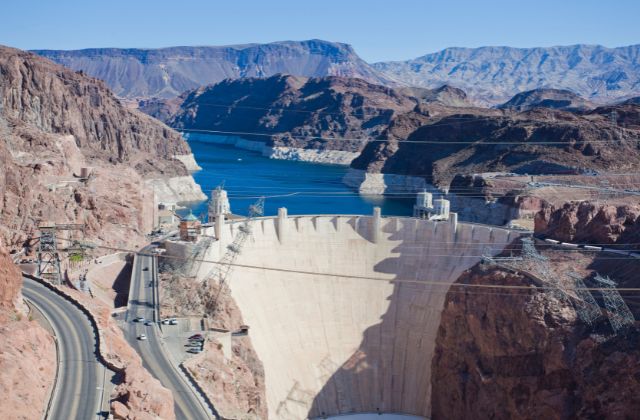
With almost seven million visitors a year, nearly one million take excursions inside the dam; it is also a popular tourist destination. Since the dam’s construction, a federal roadway has run along its crest, providing access to both Nevada and Arizona and tourists to the dam. The popularity of the Lake Mead recreation area and the dam led to increased traffic, which was made worse by the security measures implemented following the September 11 attacks.
Let us have a look at some interesting facts about the Hoover Dam!
12 Fascinating Hoover Dam Facts For Kids
1. The Hoover Dam is named after former US President Herbert Hoover.
In the 1920s, Herbert Hoover served as commerce secretary for the United States during his term (1929-1933), coinciding with the dam’s beginning of construction. Herbert Hoover helped secure the required agreements to move the project forward during his tenure. Although Hoover’s name was given to the project by legislation approved by Congress in 1931, authorities in the administrations that followed Hoover’s, Franklin D. Roosevelt and Harry S. Truman, referred to it as the Boulder Dam, its pre-construction nickname. This was because the new Secretary of Interior did not like President Hoover. The dam’s name wasn’t formally changed from “Hoover,” though. They proposed several legislations in the 80th Congress (1947) to “formally” restore the name of Hoover Dam, and House Resolution 140 was introduced on March 4, 1947, with this objective.
Truman signed a congressional resolution returning the formal name of the building to usage in 1947.
2. The Hoover Dam is considered to be the Greatest Dam in the world.
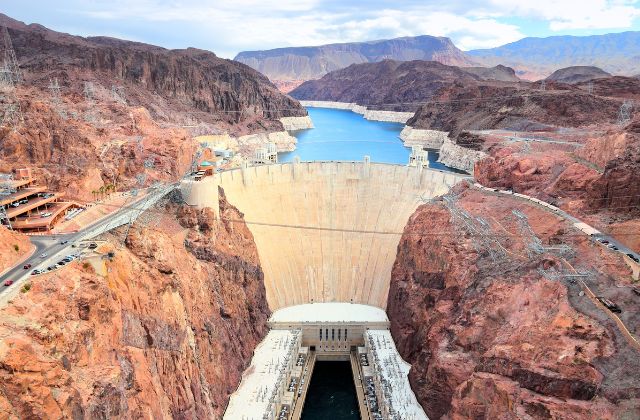
Hoover Dam is equivalent to a structure with 60 stories. The dam was the tallest in the world when it was completed in 1935. Its base consists of materials used to construct two football fields. The amount of water that runs over Niagara Falls can be handled by each spillway, which was built to allow floodwaters to pass without weakening the dam. Its construction required enough concrete to pave a road from Seattle to New York City.
The dam needed to be massive because it contains the largest manufactured lake in the United States. When the lake is full, there is enough water to cover the entire state of Michigan up to a depth of ten feet. The dam is 1,244 feet long. From the foundation’s lowest point to its top, it rises 726 feet. The dam has a base thickness of 660 feet and a top thickness of 45 feet.
3. The Hoover caused over 600 small earthquakes in the 1930s.
For many years, and still today, its reservoir served as the largest artificial lake in the entire world. More than 600 minor earthquakes were caused in the late 1930s due to the reservoir’s enormous water collection, deforming the earth’s crust under its immense weight. There were tremors in the Boulder City region and as far away as Las Vegas in 1936 and 1937 as the water level behind Hoover Dam increased. According to field research, in-situ stress conditions, the presence of cracks and faults, the geology of the local area, the reservoir’s size, and the type of changes in reservoir level are the key factors influencing reservoir tremors.
4. Boulder City didn’t exist until the construction of the Hoover Dam began.
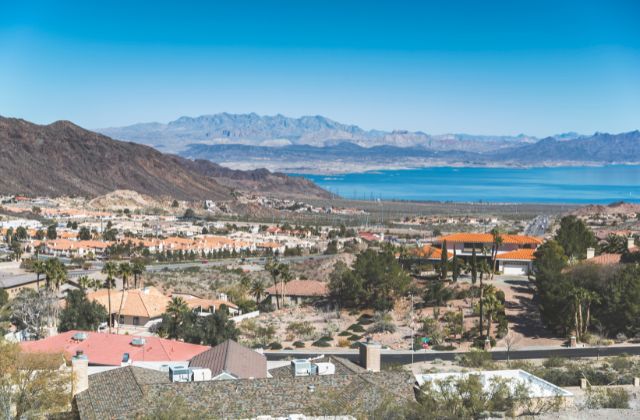
You might not be aware that Boulder City, Nevada, didn’t exist before the construction of the Hoover Dam. In actuality, the city was created in 1930 specifically to house the many laborers involved in the dam’s construction.
Boulder City, built on federal property, lacked a mayor or elected representatives. Strangely enough, a U.S. Bureau of Reclamation employee was in charge of running the entire community. This individual had the authority to impose regulations as he deemed fit. Early laws in Boulder City even forbade drinking alcohol and participating in casinos. The city was not formally formed until 1960, thirty years after its initial construction, when the federal government took control.
5. The Nazis wanted to destroy the Hoover Dam in World War 2.
The Hoover Dam has contributed to the remarkable growth of southern California, including its vast cities, industrial base, and enormous agricultural industry.
Reclamation and even the general public were more alert to potential enemy threats to the dam. Hitler’s brutal aggression in Europe intensified, and the Japanese army advanced against its neighbors across the Pacific. Many guests voiced worry about sabotage and questioned what security measures were in place to guard against it. By 1939, the growing conflict immediately affected the faraway Hoover Dam. Before America entered World War II in November 1939, American officials were aware of a Nazi plot to blow up Hoover Dam. The terrible result of destroying Hoover Dam would have been to cut off vital electrical power to southern California’s thriving and essential airplane manufacturing sector.
American authorities set limitations on boats permitted into Black Canyon and workers at the dam to thwart further attacks on the structure. All visitors to Hoover Dam were prohibited until the start of World War II in response to the December 1941 attack on Pearl Harbor.
6. Hoover Dam is a tourist hotspot!
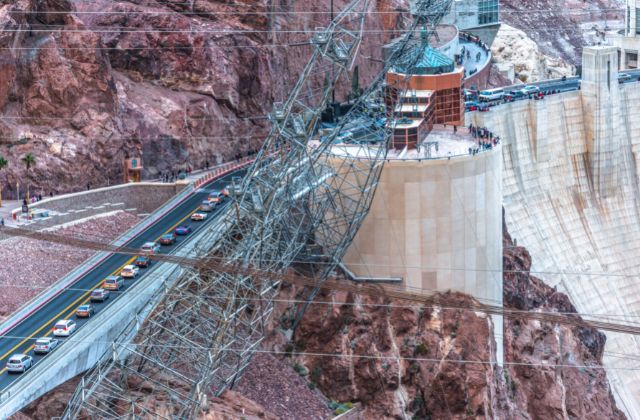
It’s clear that the Hoover Dam is a true engineering marvel and one of America’s wonders. The dam now doubles as a popular tourist site and a working power plant. Nearly 7 million people visit the dam yearly to take selfies and experience its magnificence because it provides breathtaking views and unique insights.
Along the journey, you’ll be able to see the beautiful Lake Mead, the magnificent “Welcome to Las Vegas” sign, and other thrilling locations for photo ops. The best thing, though? It is only a short drive that separates the flash and splendor of Las Vegas.
7. Engineers sped up the concrete cooling process during the construction of the Hoover Dam.
Concrete needs some time to solidify and become stable. The amount of concrete increases the duration of time it takes to cool. If engineers had not devised a quicker solution — an enormous refrigeration system capable of creating an average of 1,000 tonnes of ice each day — the Hoover Dam’s massive volume of concrete would have taken nearly 125 years to cool. According to The New York Times, when the concrete blocks were constructed, the engineers “embedded a network of one-inch pipes in them, through which ice water was circulated.” Due to the significant acceleration in the cooling process, each enormous concrete building block only required two months to cool completely. The concrete cooled down more quickly thanks to refrigeration technology, which reduced the likelihood of breaking.
8. Hoover Dam was the tallest dam in the United States at one point.
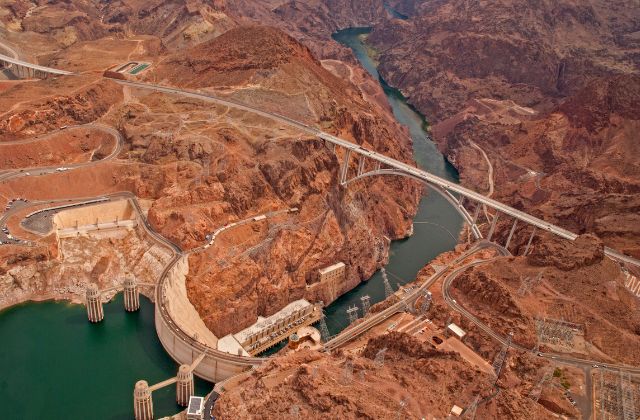
The Owyhee Dam in Oregon, at 420 feet tall, was the tallest until the Hoover Dam was finished two years ahead of schedule. The Hoover Dam broke the previous record by rising 726 feet when it was finished. It took 20 years to construct a taller dam, the 820-foot Mauvoisin Dam, in Switzerland. The Hoover Dam was once the highest dam in the country, but in the late 1960s, the 770-foot-tall Oroville Dam in California surpassed it to claim the title.
9. Many workers died during the construction of the Hoover Dam.
Between 1931 and 1936, when Hoover Dam was being built, there were numerous catastrophes. Ninety-six fatalities from accidents are listed in data from the construction site. In addition, it was alleged that 42 workers passed away from illnesses contracted while the dam was being built.
Today, some historians believe that these additional fatalities were caused by carbon monoxide poisoning from exposure to gas in construction tunnels. It’s crucial to remember that, contrary to certain gruesome myths about Hoover Dam, nobody was buried alive while pouring the 4.3 million yards of concrete.
About 21,000 workers worked hard to build the dam. The dam was constructed by about 3,500 men on an average working day, with the average peak number of employees reaching about 5,200 men in June 1934. According to The History Channel, males were paid “an hourly rate ranging from 50 cents to $1.25,” which is low by today’s standards.
10. The Hoover Dam consists of 4 million yards of concrete cement!
The Bureau of Reclamation funded the construction of the Hoover Dam by providing enormous quantities of concrete to make the 726-foot-tall dam. The project required 3.25 million cubic yards of concrete for the dam itself and 1.11 million cubic yards for the power plant and other structures and utilities.
According to the Bureau of Reclamation’s website, a standard highway 16 feet wide could be paved with over 4 million cubic yards of concrete used to construct the dam. Moreover, the website claims that the dam will rise higher than the 1,250-foot Empire State Building if placed on an ordinary city block or built as a monument two and a half miles wide and 100 feet high.
11. The tall engineer of the Hoover Dam disparaged his staff in front of the local media.
The workers’ decision to strike in 1931 was influenced by the dangers of the construction site and the terrible conditions in Ragtown. The Hoover Dam chief engineer was not impressed by his staff. Francis Trenholm Crowe, the project’s principal engineer, and the superintendent were resolutely unsupportive of the committee established to voice the employees’ concerns. In reality, Crowe refuted all of the team’s complaints by implying he was eager to replace the personnel. According to printed quotes from conversations with Crowe in regional news magazines, his team is “malcontents” who he “would be pleased to get rid of.” The hard-line strategy was successful, and the workers started working again.
12. The Hoover Dam staff knew how to put on a show!
Despite the oppressive heat, the dam’s construction fascinated onlookers from all over the nation. The death-defying antics of the “high scalers,” who rappelled down the Black Canyon to clear away loose rock from the gorge’s walls, were even more amusing than the project’s technological accomplishments. Although one might anticipate that such work would require the utmost prudence, the high scalers became renowned for their entertaining, if poorly planned, exploits.
The daredevil Louis Fagan, often known as “One-Rope Fagan” and “The Human Pendulum,” was a favorite among spectators for his pranks. Teams would move from one region to the next while working on outcroppings in the canyon walls by wrapping their arms and legs around Fagan and having him swing them to their new location.
Conclusion
Hoover Dam is one of the most incredible dams ever constructed! Leave aside its technological and engineering achievements; it has breathtaking views and cultural significance. A lot of hard work, blood, and sweat went into the dam’s construction. We hope you enjoyed reading these fascinating facts about the Hoover dam and learned something new.
